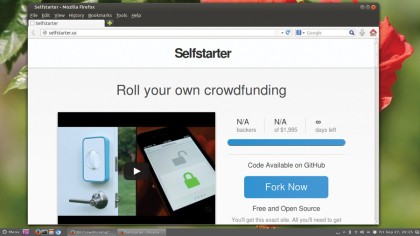The power of crowdfunding: how to make the most of it
Get funding with minimum hassle
Using social media and the idea of six degrees of separation, you can rely on members of your initial core community to reach out to their respective communities and ultimately create a viral distribution campaign.
Also remember that the initial days of the campaign are very crucial. You are solely responsible for generating the initial momentum. This is why it's important to identify your initial target audience; the ones that will jumpstart your campaign and become early contributors and promoters.
Crowdfunding comes with some potential pitfalls. So before you launch your campaign you will want to learn from the mistakes of crowdfunding failures to avoid turning off investors and customers. According to Tony França, creator of FreedomSponsors, there are two factors for success on a crowdfunding campaign:
"Some projects fail basically because they have no market, and many fail because their marketing is not good enough. Your idea must actually be something that people need or want. Otherwise you have no market and your project will fail. Period. And even if you do have a market, you really need to work on the marketing. The world needs to know about your campaign. This is the hard part. I believe the most successful campaigns are the ones who market their product so well that it makes people want to tell others about it, and then they go viral."
Warren Konkel, CEO of Bountysource, points to another reason for unsuccessful campaigns that haven't done any background work and research: "Generally speaking, fundraisers fail to meet their goal for one of two reasons: people don't want it or people don't understand it."
The bigger problem, however, is projects failing to map their financial strategies. If you haven't done the initial research, don't be surprised if the total cost of the project and rewards end up exceeding the amount you raised. One of the key factors for faltering campaigns, according to Nolan, is pointless rewards that have excessive fulfilment criteria: "You're going to personally sign 10,000 postcards? Really?"
Launching a campaign and setting a goal thinking that you can 'figure out the tax stuff later' is another pitfall that he highlights. Carey agrees that some projects promise too much without properly costing their physical rewards: "I think delivery costs have bankrupted a couple of projects because they didn't put a cap on how many branded mugs they had to deliver."
Get daily insight, inspiration and deals in your inbox
Sign up for breaking news, reviews, opinion, top tech deals, and more.
The Hanfree iPad Accessory is a prime example. The project creator underestimated the real cost of bringing his idea to market and mass produce a product. After successfully meeting the $35,000 goal, he couldn't deliver the product nor the rewards. Eventually one frustrated backer sued the project creator who then declared personal bankruptcy.
Ready to roll?

By now you must be itching to get started on your precious project. But before you do, here's a quick summary of what's involved in launching and running a good crowdfunding campaign. There are a bunch of things you must decide before you can even begin looking for a platform to run your campaign on.
First, decide the target you want to achieve while keeping in mind the nature, number and diversity of the rewards. Also, spend time researching what duration to give your campaign by looking at similar successful projects. Picking a long duration may seem like the simple answer, but remember you will have to keep the momentum going for its entire duration (See Ideal Timeframe for a Campaign, p39).
When you've worked out these bits, start looking around for a platform. In the last couple of pages of the feature we look at some of the best crowdfunding platforms and tools. Decide on which funding model is ideal for you and your project.
With almost two decades of writing and reporting on Linux, Mayank Sharma would like everyone to think he’s TechRadar Pro’s expert on the topic. Of course, he’s just as interested in other computing topics, particularly cybersecurity, cloud, containers, and coding.
